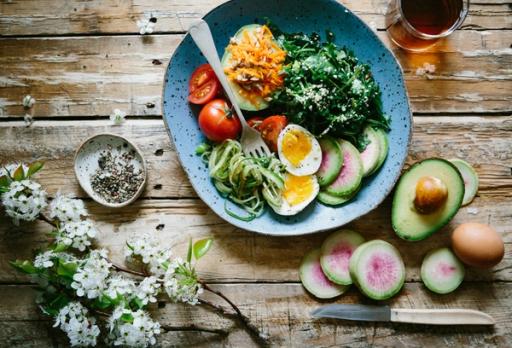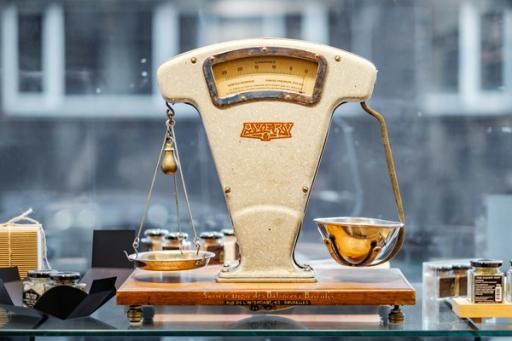
If you’ve ever tried to lose weight, you know how frustrating it can be. You may lose weight at first, but then plateau or regain it. You might also shed some pounds, but not the body fat you want. Instead, you lose muscle. Who wants that? Not only does it hurt your physique, but it also slows your metabolism, making it even harder to lose weight. One of the best ways to avoid these scenarios is to track macros. But it’s not just monitoring macros that helps you shed excess weight. It’s understanding the best macros for weight loss that counts. In this blog, we’ll help you find the perfect macro balance to effortlessly shed excess weight while preserving muscle, feeling energized, and achieving a lean, toned physique. So, How to Hit Your Macros?
To help you achieve your goals, we’ll also introduce you to Cal AI’s calorie tracker. This valuable tool makes it easier to hit your macro targets and reach your weight loss objectives faster.

"Macros" is shorthand for "macronutrients," a term used to describe the three key food groups your body requires to function: carbohydrates (to give you energy), fats (to keep you satiated), and proteins (to build and repair muscle).
Striking the right balance of these macros and being aware of your overall calorie consumption can be the game-changing hack to effectively build muscle, maintain weight, or lose body fat — hence all the chat around macros for weight loss.
Fact: Carbs are a necessity. The primary purpose of carbohydrates is to provide energy. Your body digests them quickly and turns them into sugar, or blood glucose, which you then store in your liver and muscles as glycogen. Blood glucose and glycogen fuel high-intensity exercise (e.g., the HIIT workouts you've been doing at home), the kind you need to burn fat and build metabolism-boosting muscle.
Complex carbohydrates are key for maintaining a healthy weight and keeping our mood stable, since they’re a good source of tryptophan – and when tryptophan enters your brain, more of the happy hormone serotonin is produced. Carbs are also great for your gut health and hormones, too.
Healthy fats (mixed nuts and seeds, extra virgin oil, avocado, tofu, eggs, and cheese) can:
Fat makes up cell membranes, promotes nerve and brain health, and increases the absorption of the fat-soluble vitamins A, D, E, and K. It also helps protect your bones and organs and is a backup fuel store for energy.
As you may already know, protein is crucial if you want to maintain or build muscle. An important factor of healthy nutrition, consuming adequate protein helps increase lean body mass by building muscle—the most sustainable path to long-term weight loss.
“Protein is the building block of all muscles and muscle synthesis,” says Catherine Rabess, a dietitian and NHS dietetic manager. “It's really important to have it in our diet because protein is a source of essential amino acids, which we aren't able to get anywhere else.”
Amino acids are vital for nutrient absorption and tissue repair, both crucial in recovering from exercise. Rabess suggests grabbing some protein within an hour of your workouts. “It doesn't have to be a protein shake or bar; a glass of milk or a handful of nuts will get the job done too.” Heck, even a spoonful of nut butter in your smoothie.
Until recently, a standard equation for fat loss was 45% protein, 30% carbohydrates, and 25% fat. Nevertheless, more modern research has revealed a second formula that can prove successful when decreasing body fat into a healthy range: 50% carbs, 35% protein, 15% fat.
According to McMaster University research, a 5:3.5:1.5 ratio of carbs, protein, and fat (coupled with a four-week workout programme) can deliver healthy fat loss results. This may be better than reducing carbs and increasing protein.
In the study, subjects who ate to this ratio lost 10.5lb of fat and gained 2.5lb of muscle, compared with subjects eating 15% protein, 50% carbs, and 35% fat. Those in the second group lost only 7.7lb of fat and gained no muscle. If you struggled with maths at school, try our step-by-step macros calculator and get your phone out because the specific numbers are personal, as with all things in the health and fitness world.
Once you've calculated your activity levels and basal metabolic rate (BMR), you can determine the number of calories you need to consume and from which sources.
The NHS Eat Well Guide suggests that around a third of your food is made from starches and complex carbohydrates, that we should have a palm-sized portion of protein with each meal, and focus on getting in enough fruits, vegetables, and fibre. An example plate hitting the above macros would look as follows: 110g roasted turkey, 55g brown rice, 150g stir-fried cauliflower in 15g oil.
These are general recommendations from nutritional therapist Daniel O’Shaughnessy, but it's best to work out what your body needs. This will establish the best percentage of macros, bespoke to you.
There are studies to both support and oppose different macronutrient ratios for weight loss. The most important nutritional component of weight loss is being in a calorie deficit. This forces your body to draw energy from its current stores (body fat) regardless of the macronutrient makeup of your diet.
Research suggests you can lose weight healthily and sustainably regardless of the macronutrient ratio.
For example: A 2020 review found that several macronutrient ratios promoted weight loss, as well as dietary habits like meal timing and eating larger meals for breakfast.
A 2020 review of 121 studies compared the effects of 14 popular diets on weight loss and cardiovascular risk factors. The authors found some differences in weight loss and blood marker levels across the different diets. Nevertheless, weight loss reductions occurred in all 14 diets, regardless of the macronutrient ratios.
A 2018 study divided 600 overweight people into a low-fat or low-carb diet. After 2 months, participants in both groups began adding either fats or carbs back into their diets. After 1 year, the low-fat diet group lost 11.7 pounds (lbs) (5.3 kg), while the low-carb group lost 13.2 lbs (6 kg)—a mere difference of 1.5 lbs (0.7 kg).
While the macronutrient composition of your diet may not directly influence weight loss, it can affect your ability to adhere to a reduced-calorie diet. Individualize your macronutrient ratio based on your preferences and health to increase your chances of success on a reduced-calorie diet.

Though they sound similar, the best macros for weight loss and fat loss are slightly different. Weight loss can include water weight and muscle tissue loss, while fat loss specifically targets reducing body fat. Tweaking your macros to lose body fat involves manipulating the ratio of the macronutrients you eat to achieve fat loss, not for all-encompassing weight loss (which can include water weight and muscle tissue loss, too).
This includes prioritizing protein and carbohydrates, and being aware of how much fat you're eating – the 50% carbs, 35% protein, 15% fat ratio we discussed before. If you're just starting out on your journey and trying to lose weight (which includes body fat, plus muscle mass and water weight), eating in a calorie deficit is an easier, more straightforward way to achieve your goals.
Macro tracking is an advanced nutritional technique and only something to try when you feel confident eating with more attention or have specific body composition-based goals. General weight loss doesn't need to be so involved, so don't stress if you feel like eating the best macros for fat loss is out of your wheelhouse. Focus on staying in a healthy calorie deficit, keeping your NEAT exercise levels up and scheduling in regular sweat and downtime.
To figure out how to hit your macros for fat loss, you must first calculate your calorie needs for weight loss to achieve a safe calorie deficit. You can do this by using an online calculator or a body weight planner.
These tools will:
The calculator will then tell you how many calories you should consume to reach your goal.9 You can adjust your macronutrients and their ratios based on the number of calories you need to lose weight.
If you want to count your macronutrients, you can do so with some calculations, food journaling, or help from phone applications. First, calculate your calorie needs. Then, determine macronutrient distribution. Different diets come with varying distributions of macronutrients.
The 2020-2025 Dietary Guidelines for Americans recommend adults get 45-65% of calories from carbohydrates, 10-35% from protein, and 20-35% from fat 2. Now that you know your calorie needs, let's say you need 1800 calories to lose weight and will use the macronutrient ratios given above. Your macronutrient targets would be approximately 202.5-292.5 grams of carbohydrates, 45.7-157.5 grams of protein, and 40-70 grams of fat.
Many tracking apps allow you to set your macro goals and calculate macros when you enter meal details. Some apps can even do this by analyzing pictures of your meals.
You must learn which foods contain particular macronutrients to target your macro distribution. Here are sources of macronutrients:

If you want to lose weight or are already following a weight-loss diet, here are a few things that are helpful to know:
Your nutritional needs are unique and influenced by health, genetics, gender, age, body weight, body composition, physical activity level, and lifestyle. It's essential to make personalized nutritional choices.
Losing 1-2 pounds (0.5-1 kilograms) per week is recommended. You may lose a bit more at first, but with time, you'll likely lose a lesser amount until you settle the target weight. Fast weight loss can cause loss of muscle mass, gallstone formation, gastrointestinal discomfort, and tiredness.
The process of losing weight is not the same for everybody. Some can lose weight by lowering their calorie intake, while others may need a more tailored nutrition plan that meets their nutritional needs and requirements.
Moving your body can contribute to weight loss and overall health. The World Health Organization (WHO) recommends at least 150 minutes of aerobic activity (such as walking, running, swimming, or dancing) and two days a week of strength training for adults.
Packaged foods display nutrition fact labels. Reading these labels can help you choose more nutritious foods while shopping.
Along with a calorie deficit, it’s important to consider the quality of the calories you’re eating. For example, three cups (270 g) of raw broccoli and two doughnut holes each have nearly 100 calories. Nevertheless, broccoli’s nutritional properties, such as high fiber, can keep you satiated for longer.
This could help you manage and control your caloric intake throughout the day to lose weight safely. Some ways to increase the quality of your diet to promote weight loss may include:
These foods pack many beneficial nutrients and contain high amounts of fiber, which can help increase feelings of fullness.
Eating high-protein snacks may have weight-loss benefits, such as reducing your appetite. Protein also requires more metabolic energy to digest than fats and carbs, known as the thermic effect. This means 20-30% of its calories are simply to digest it, compared to 5-10% for carbs and 0-3% for fat.
Foods high in fat and carbs without much protein can stimulate the reward center, a trusted source in your brain. This could increase your cravings, which can lead to overeating and weight gain.
Rabess says that if you're turning to macro tracking to help you lose fat, it's wise to seek support and advice from a qualified dietitian or nutritionist. Calorie counting and macro tracking can also be an easy way to develop an unhealthy relationship with food. Remember, we don’t eat numbers.
If you start to feel anxious about the occasional Saturday takeaway or enjoying a glass of wine on a Friday, take a step back. “Feeling the need to quantify every morsel can take the fun and joy out of food,” she says. Got that? Use it, but use it wisely. Health is always more than just about one metric.
Cal AI transforms calorie tracking with cutting-edge AI technology. Just snap a photo of your meal, and we'll do the rest.
Our app combines your phone's depth sensor with advanced AI models to:
With 90% accuracy on visible foods and multiple tracking options like:
We've made nutrition tracking effortless. Whether you're scanning a full meal or a quick snack, Cal AI
Our AI learns from your feedback to improve accuracy. It includes personalized insights and smart reminders to keep you on track. Cal AI makes achieving your fitness goals simpler than ever.
Track your calories with your camera using Cal AI's calorie tracker today!